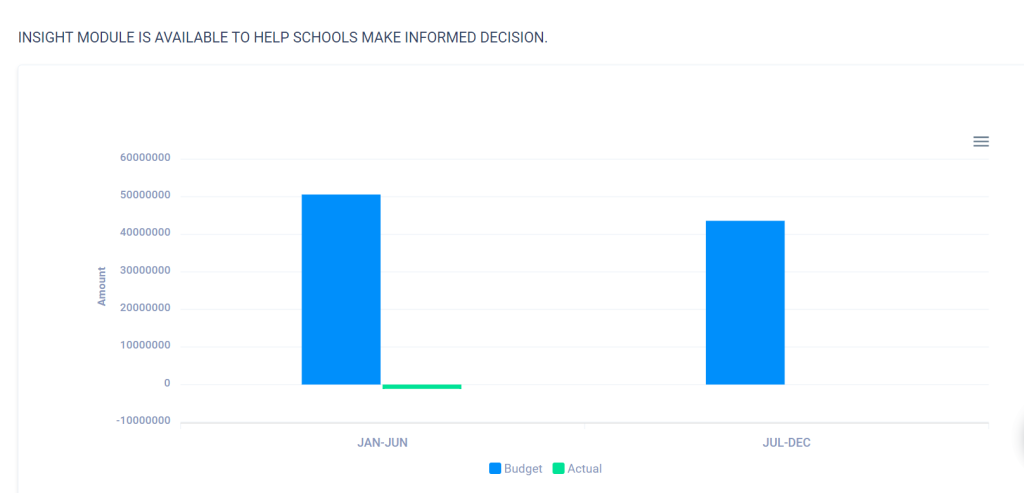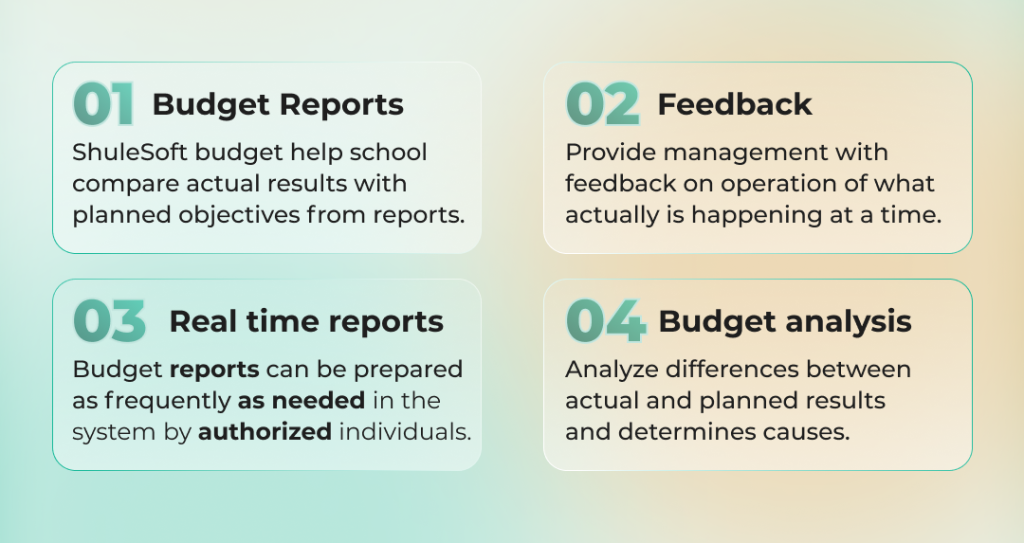
What is budget control? how it help your school?

Budget control refers to the process of managing, monitoring, and adjusting a school’s budget and cash flow to ensure that the business remains on track to meet its financial goals and deliver on the school’s objectives.
Budget control, meanwhile, is an ongoing process that supports the budget and helps achieve its wider financial aims. Budget control requires:
- Reviewing budgets regularly to track school spending, expenses, and performance against the budget’s figures.
- Identifying reasons for variance, which occurs when actual spending and school expenses are higher than budgeted.
- Taking quick corrective action where variance is identified. This may include reducing expenses, increasing income, or both, to ensure school business performance remains on track.
COMMON PRINCIPLES OF BUDGETARY CONTROL
There are a few guiding principles apply that you can use for your school:
- Set realistic budgets. A budget should be achievable and built on accurate data from previous years or comparable information.
- Be flexible. Adjustments may be necessary due to changes in the market or business environment, so budgets – and businesses – need to be able to adapt as needed.
- Communicate. Everyone within a school should know how their role helps deliver on the school’s budget. In fact, budget control relies on two-way, collaborative communication with staff.
- Monitor progress. Budgets need to be monitored regularly to ensure that any issues are identified as early as possible.
- Take corrective action. Any variances should be addressed straight away to ensure that spending and expenses get back on track.
THE BENEFITS USING SHULESOFT IN BUDGETARY CONTROL
Whether you’re a new school, or an existing one, you can prioritise budget control to improve your chances of achieving the financial goals for school development plans. This is because a well-functioning budget control system can help school to:
- Avoid financial problems by identifying potential problems early on.
- Make better, data-driven decisions about how to allocate resources.
- Improve efficiency and productivity.
- Increase profitability.
- Control spending and expenses.
- Create more accurate budgets.
THE BUDGETING PROCESS: A STEP-BY-STEP GUIDE
When implementing a budget control in ShuleSoft system, there are a few key steps to follow.
STEP ONE: SET BUDGETS
These budgets should be based on estimates about the resources that department heads require to deliver their activities and initiatives, meet their targets, and achieve their goals.
STEP TWO: TRACK SPENDING
It’s crucial that school understand how much money they are actually spending. By regularly tracking financial statements, expense reports, and so on, they can effectively gauge their performance by comparing spending against their budgeted amounts. Tracking can be performed manually at scheduled points, or school can use robusted ShuleSoft systems to detect variances.


STEP THREE: TAKE CORRECTIVE ACTION
Wherever variances occur, they must be addressed and rectified as soon as possible to ensure that school finances stay on target.
How the use of ShuleSoft budget help in controlling school operations?

IN CONCLUSION
Budget control is not just about keeping a school’s finances in check; it’s about ensuring that every cent spent is an investment in the institution’s future. By diligently reviewing budgets, understanding variances, and taking swift corrective actions, schools can navigate the complex financial landscape with confidence. This proactive approach to budget management enables schools to optimize their resources, enhance educational offerings, and ultimately, secure the school’s financial sustainability and success.
Utilizing tools like ShuleSoft for budgetary control empowers schools to harness technology for financial management. ShuleSoft’s comprehensive system provides real-time insights into financial performance, streamlines expense tracking, and facilitates informed decision-making. With such robust support, schools can focus on their primary mission—delivering quality education—while ensuring that they remain financially robust and capable of adapting to the ever-evolving educational landscape.